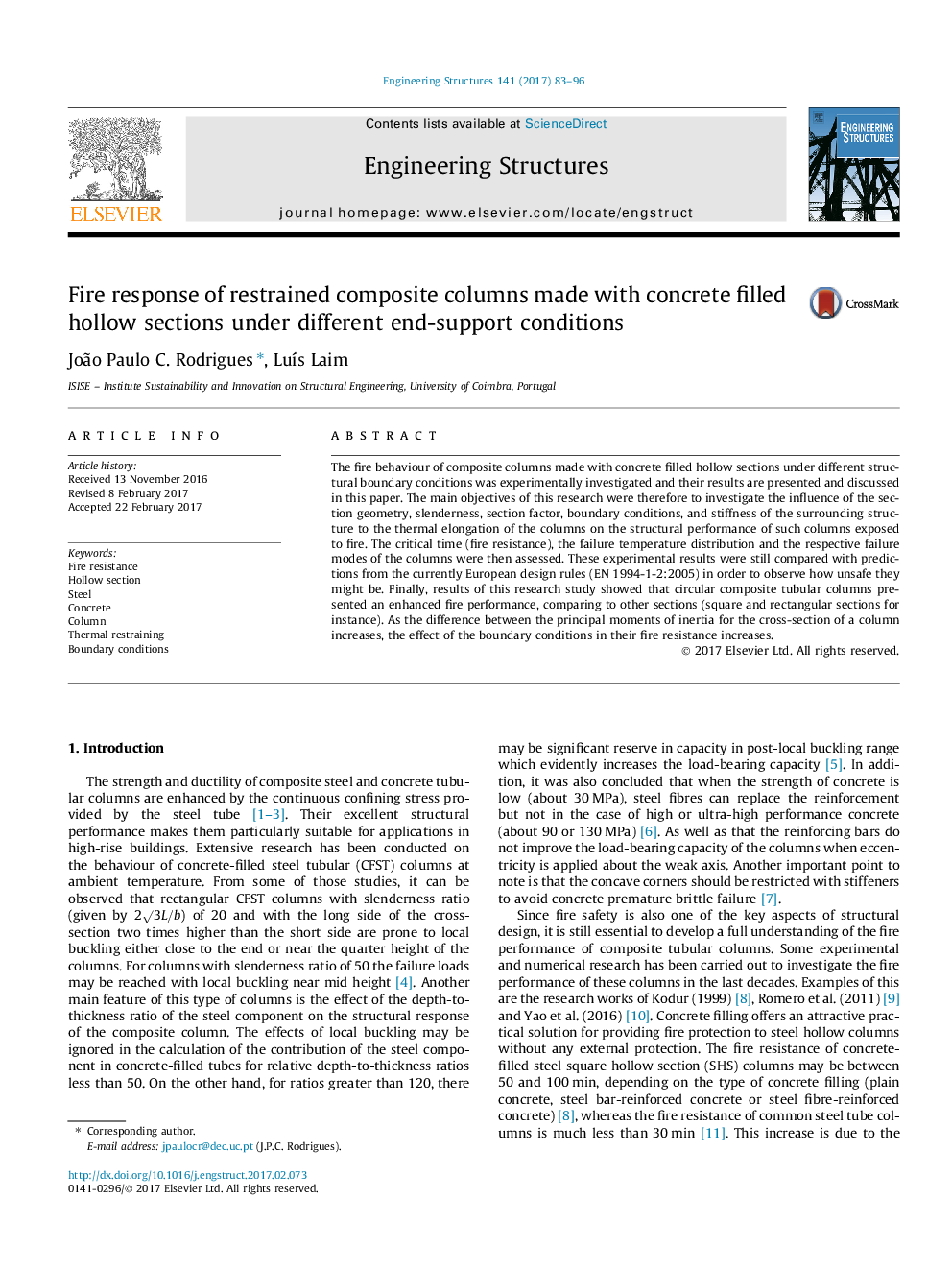| Article ID | Journal | Published Year | Pages | File Type |
|---|---|---|---|---|
| 4920236 | Engineering Structures | 2017 | 14 Pages |
Abstract
The fire behaviour of composite columns made with concrete filled hollow sections under different structural boundary conditions was experimentally investigated and their results are presented and discussed in this paper. The main objectives of this research were therefore to investigate the influence of the section geometry, slenderness, section factor, boundary conditions, and stiffness of the surrounding structure to the thermal elongation of the columns on the structural performance of such columns exposed to fire. The critical time (fire resistance), the failure temperature distribution and the respective failure modes of the columns were then assessed. These experimental results were still compared with predictions from the currently European design rules (EN 1994-1-2:2005) in order to observe how unsafe they might be. Finally, results of this research study showed that circular composite tubular columns presented an enhanced fire performance, comparing to other sections (square and rectangular sections for instance). As the difference between the principal moments of inertia for the cross-section of a column increases, the effect of the boundary conditions in their fire resistance increases.
Related Topics
Physical Sciences and Engineering
Earth and Planetary Sciences
Geotechnical Engineering and Engineering Geology
Authors
João Paulo C. Rodrigues, LuÃs Laim,
